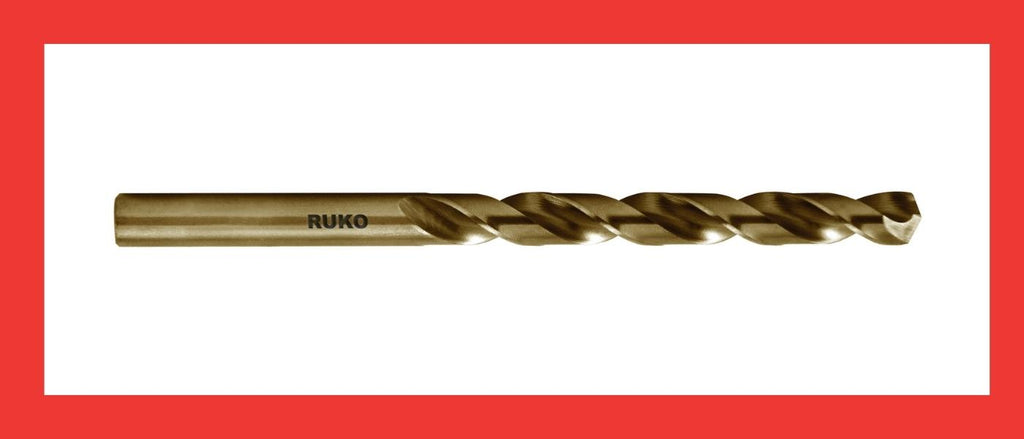What is a HSS Drill Bit?
The most economical general-purpose drill material is high-speed steel. It is a cost-effective solution for many drilling applications. It is a popular metal drill bit material that can drill safely through several types of metals, plastic, and hardwood.

HSS bits are tough and resistant to heat. As a result, HSS is suitable for high-speed operation and provides a long-lasting performance.
The HSS drill bit features two cutting edges that are angled at approximately 118 degrees to each other.
It's pretty forgiving when it comes to hand drill and drill press operations. HSS is also very economical since it can be reused and resharpened to extend its life. In addition, HSS drill bits are sometimes coated with black oxide or titanium to prevent corrosion and reduce friction.
Is a HSS drill bit for metal?
Yes HSS drill bits are perfect for drilling metal.
HSS bits are made of carbon steel with the addition of additional elements such as chrome and vanadium. As a result, they are incredibly durable and are well suited for drilling into metal surfaces.
HSS drill bits are suitable for drilling iron, steel, and other metals such as brass, copper, and aluminum alloy. When drilling metals, HSS drill bits are more resistant to the heat created by the high-speed operation. Their resilience is so impressive that it can reach up to 650°C when operating. As a result, they can be employed at high drilling speeds on hard surfaces.
What is the difference between HSS and SDS drill bits?
One significant distinction between a HSS drill bit and an SDS drill bit is how the drill bit is chucked or fastened inside the drill. HSS drill bits are compatible with any standard chuck.
A HSS drill has a circular shank inserted into the drill and is kept in place by three jaws that tighten around the shank. The problem with this configuration is that the jaws may not grip the shank tightly enough, mainly when the drill is in operation.
SDS or "Spannen Durch System" drill bit was designed initially by Bosch features guiding slots. The shank is still circular, but at the very end, it becomes square and contains slots to be inserted into a hammer drill.
An SDS drill bit does not need to be tightened like an HSS drill bit. Instead, simply insert it into the SDS hammer drill's designated slots, and it will remain in place. Drilling the hole using an SDS drill bit ensures that you will go all the way through hard surfaces such as concrete faster and more efficiently.
The most common type are :

- SDS - The original SDS with slotted shanks.
- SDS-Plus - interchangeably with regular SDS and simply offered an improved connection. It has 10 mm shanks with four slots that hold it more securely.
- SDS-MAX - SDS Max has a larger 18mm shank with five slots used for bigger holes. It is not interchangeable with the SDS and SDS PLUS frill bit.
- Spline - It has a larger 19mm shank and splines that hold the bits tighter.
The shanks of SDS and SDS-Plus drill bits are interchangeable and have a diameter of 10 mm. Unfortunately, the spline is not compatible with SDS-MAX drill bits. However, you can find after-market adapters so that you can use these drill bits interchangeably.
What is the difference between HSS and masonry drill bits?
The primary distinction between masonry and an HSS drill bit is their function. HSS drill bits are typically used for metals, whereas masonry drill bits are used for concrete bricks and other comparable materials.
Masonry bits are usually used with a hammer drill. It is made of carbon steel and has a sloping tip frequently coated in carbide to give it more strength. Their large arrow-shaped heads help you identify masonry drill bits. The cutting tip of a conventional masonry bit is ground at an angle with no spur point in the center.

The tip angle of a masonry bit is often greater than that of a metal bit. A masonry bit has a different tip angle than an HSS bit, which is 135°, giving it extra strength. It uses both rotational and hammering forces to punch a hole as it drills.

Share this post
- 0 comments
- Tags: Aluminium Drilling, Brick Drilling, Concrete Drilling, Drills, Jobber Drills, Masonry Drills, RUKO, Steel Drilling, TERRAX, Twist Drills
